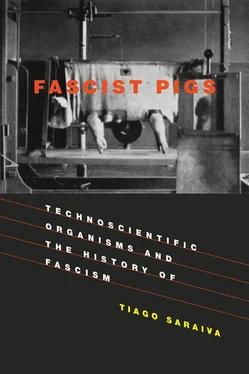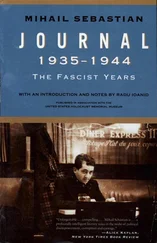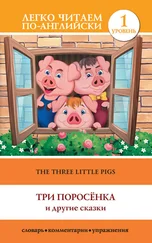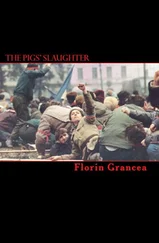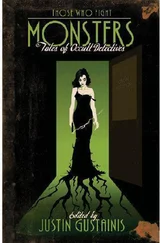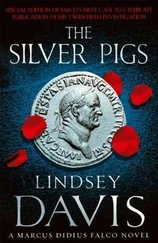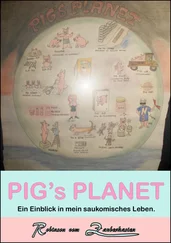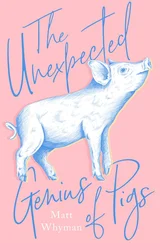Heather Pringle, The Master Plan: Himmler’s Scholars and the Holocaust (Harper, 2006).
Quoted in Wendy Lower, “A new ordering of space and race: Nazi colonial dreams in Zhytomyr, Ukraine, 1941–1944,” German Studies Review 25, no. 2 (2002): 227–254.
For an inspired exploration of the relation between the American frontier and the “Drang nach Osten” in Nazi ideology, see David Blackbourn, The Conquest of Nature: Water, Landscape and the Making of Modern Germany (Random House, 2006), pp. 280–296.
Henrik Eberle, Die Martin-Luther-Universität in der Zeit des Nationalsozialismus 1933–45 (Mitteldeutscher, 2002), pp. 234–235.
For a detailed description of German colonial rule in the Ukraine, see Wendy Lower, Nazi Empire-Building and the Holocaust in Ukraine (University of North Carolina Press, 2005).
Debórah Dwork and Robert Jan van Pelt, Auschwitz, 1270 to the Present (Norton, 1996), p. 140.
Quoted on page 443 of Longerich, Heinrich Himmler .
Sven Oliver Müller, “Nationalismus in der deutschen Kriegsgesellschaft 1939–1945,” in Die Deutsche Kriegsgesellschaft 1939 bis 1945 , volume 2, Ausbeutung, Deutungen, Ausgrenzung , ed. J. Echternkamp (Deutsche Verlags-Anstalt, 2005), pp. 79–80.
Oswald Pohl to Brandt, 11 July 1944, Bundesarchiv, Persönlicher Stab Reichsführer-SS, NS 19/2596, “Unterbringung des Gestüts und der Karakul-Schafherde von Dr. Schäfer in Ungarn.”
Allen, Hitler’s Slave Lords , p. 143.
Ibid., p. 143.
Hitler’s Table Talk 1941–44: His Private Conversations , ed. H. R. Trevor-Roper (Enigma, 2000), p. 53.
Ralf Meindl, Ostpreusens Gauleiter. Erich Koch—eine politsche Biographie (Fibre, 2007).
Some historians have claimed that such lack of sense of the limits of Imperial power is the main distinguishing feature of Nazi imperialism relative to other colonial experiences. See, e.g., Jane Burbank Cooper and Frederick Cooper, Empires in World History: Power and the Politics of Difference (Princeton University Press, 2010).
Lizzie Collingham, The Taste of War: World War II and the Battle for Food (Penguin, 2012), p. 188.
Heim, Kalorien, Kautschuk, Karrieren , pp. 40–49. For a contemporary German overview of Soviet efforts in animal breeding, see Jonas Schmidt, “Tierzuchtforschung in der Sowjetunion,” Züchtungskunde XVII (1942): 313–321. Specifically on Karakul, see Frölich and Hornitschek, Das Karakulschaf und seine Zucht , pp. 21–26. Neither of these sources mentions breeding research on Karakul in the Ukraine.
Heim, Kalorien, Kautschuk, Karrieren , p. 60, n. 14; Eberle, Die Martin-Luther-Universität , pp. 234–235, n. 11.
Pohl to Brandt, 7 October 1944, Bundesarchiv, Persönlicher Stab Reichsführer-SS, NS 19/2596.
Frölich and Hornitschek, Das Karakulschaf . The first edition of the work was published in 1928 and was authored by Frölich alone. On Frölich, see the Festschrift in Kühn Archiv 5I2 (1939).
This argument was also used to try to prevent Hornitschek’s mobilization for the Eastern Front in 1943. It failed, and he died there.
Max-Planck-Gesellschaft Archiv, Abt. 1, rep. 1A, no. 2887/1–6 Vertrag für Übernahme der Karakulherde.
Gustav Frölich, “Bericht über die Abschätzung der Karakulherde des Tierzuchtinstitutes der Universität Halle bei ihrer pachtweisen Übergabe an das Institut für Tierzuchtforschung der Kaiser Wilhelm-Gesellschaft,” MPG-Archiv, I Abt., Rep. 1A, Nr. 2887.
“Bericht über die Abschätzung der Karakulherde bei der Rückgabe von dem Institut für Tierzuchtforschung der Kaiser-Wilhelm-Gesellschaft an die Tierzuchtinstitut der Universität Halle,” MPG-Archiv, I Abt., Rep. 1A, Nr. 2887.
Hans Hornitschek, “Bau und Entwicklung der Locke des Karakulschafes,” Kühn-Archiv 47 (1938): 81–175.
Gustav Frölich, “Die Zucht des Karakulschafes am Tierzuchtinstitut der Universität Halle als Versuchs- und Forschungsobjekt,” Kühn-Archiv 18 (1928): i—xiii.
Ernst Tänzer, Haut und Haar beim Karakul in rasseanalytischem Vergleich (Otto Thiele, 1926).
Frölich, “Die Zucht des Karakulschafes,” p. v.
Hornitschek, “Bau und Entwicklung,” 84.
Ibid., 83.
Jonathan Harwood, Styles of Scientific Thought. The German Genetics Community 1900–1933 (University of Chicago Press, 1993), p. 54.
Frölich, “Die Zucht des Karakulschafes,” p. iv.
Hornitschek, “Bau und Entwicklung,” p. 81, n. 16.
Frölich, “Die Zucht des Karakulschafes,” pp. i–xiii. On model organisms in the biological sciences, see Hans-Jörg Rheinberger, An Epistemology of the Concrete: Twentieth Century Histories of Life (Duke University Press, 2010); Robert E. Kohler, Lords of the Fly: Drosophila Genetics and the Experimental Life (University of Chicago Press, 1994); Karen A. Rader, Making Mice: Standardizing Animals for American Biomedical Research, 1900–1955 (Princeton University Press, 2004); Angela N. H. Creager, The Life of a Virus: Tobacco Mosaic Virus as an Experimental Model, 1930–1965 (University of Chicago Press, 2002); Angela N. H. Creager, Elizabeth Lunbeck, and M. Norton Wise, Science without Laws: Model Systems, Cases, Exemplary Narratives (Duke University Press, 2007), pp. 1–20.
“Die Zucht des Karakulschafes,” p. xii.
Hans-Jörg Rheinberger, An Epistemology of the Concrete. Twentieth-Century Histories of Life (Duke University Press, 2010).
G. Frölich, ed., Kühn-Archiv 18 (1928).
Gustav Frölich, “75 Jahre Gedanken und Arbeiten über die rassen der Haustiere und ihre Fütterung,” Kühn-Archiv 50 (1938): 139–191.
Gustav Frölich and Hans Hornitshek, Das Karakulschaf , p. 156.
Leopold Adametz, Studien über die Mendelsche Vererbung der wichtigsten Rassenmerkmale der Karakulschafe (Borntraeger, 1917).
Frölich and Hornitschek, Das Karakulschaf , p. 148.
Leopold Adametz, “Über die Eignung verschiedener Landschafrassen zur Kreuzung mit Karakuls,” Zeitschrift für Tierzucht und Züchtungsbiologie 45 (1940): 71–97.
Frölich, “Die Zucht des Karakulschafes.”
Читать дальше
